The first successful use of a police dog in NSW was on the northern beaches
These days dogs are an important part of the armoury of law enforcement agencies around the world but the first successful use of a police dog in NSW was on the northern beaches.
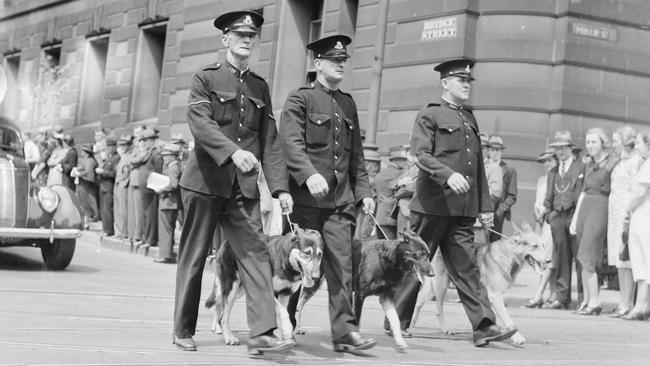
Manly
Don't miss out on the headlines from Manly. Followed categories will be added to My News.
These days dogs are an important part of the armoury of law enforcement agencies across Australia and around the world but the first successful use of a police dog in NSW was on the northern beaches in 1933.
And whereas dogs are now also used to detect drugs, explosives, cadavers and plant material, their original purpose was to track people who were missing or were on the run.
And it was a manhunt in 1932 that ended on the northern beaches that led to the formation of the police dog unit.
In April that year, Sydney was rocked by the brutal rape and murder of a young woman and the vicious bashing and murder of her boyfriend.

Dorothy Denzel, 21, and Frank Wilkinson, 25, were abducted from a secluded spot at Strathfield and driven to Moorebank, where Dorothy was raped and Frank was bashed.
They were then driven to bushland at Moorebank, where they were shot and savagely bashed about the head to make their identification more difficult.
Then they were buried in shallow graves.
The murders led to a manhunt across numerous parts of Sydney that lasted two weeks and only ended when William Moxley was captured in thick bushland above Bantry Bay on April 21.
Moxley was charged with the murders of Dorothy Denzel and Frank Wilkinson and was found guilty on June 16 and executed on August 17.
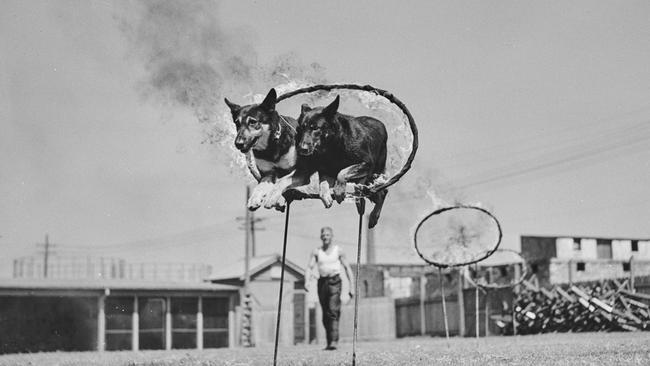
In the wake of the deficiencies exposed during the manhunt for Moxley, the chief of the Criminal Investigation Bureau (CIB), Superintendent William MacKay initiated the formation of a dog unit.
Throughout late 1932 and early 1933, Constables Denholm and Reilly trained two Alsatians for police work, Tess and Harada.
Tess was named after Tess of the Storm Country, a novel by American author Grace Miller White that led to movies of the same name being released in 1914, 1922 and 1932, and Harada was named after Takeichi Harada, a Japanese tennis player of the 1920s and 1930s.
Constable Adam “Scotty” Denholm grew up in Queensland and had been a middleweight boxing champion of that state and was also, like his father, an expert dog trainer.
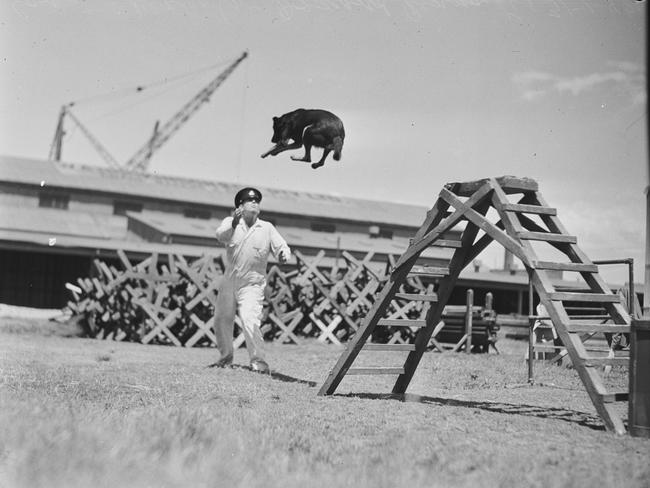
On July 5, 1933, the skills of Tess and Harada were displayed to a group of journalists, all of whom were impressed.
“The dogs have been specially trained to recognise firearms and other weapons, which are being used by criminals to prevent arrest,” one journalist wrote.
“As soon as a revolver was produced and pointed at either the dogs or their trainers, the dogs attacked the man with the weapon.
“When blank cartridges were fired at close range at the dogs, they were not cowed but continued to attack.
“A remarkable feature of the training of the dogs was that at a word from their trainers, they immediately ceased their onslaught and became docile.
“The dogs were almost human in the way that they understood the orders of their trainers.
“After giving the command, ‘Stay there,’ the trainers walked away, leaving the Alsatians with a group of men.

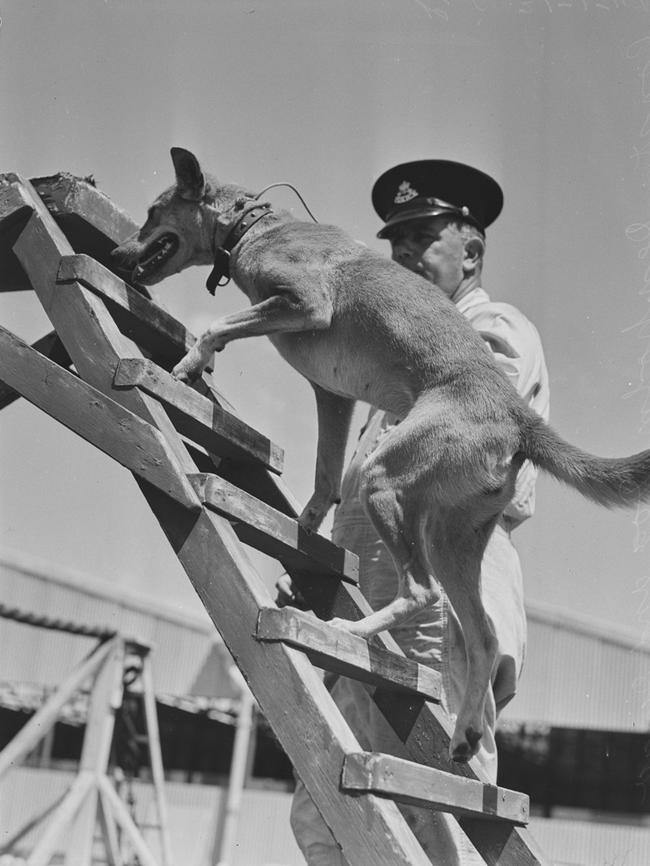
“The dogs allowed the men to approach and stroke them but would not budge an inch from the positions they had taken up.
“After the trainers had gone some distance away, they said in a quiet, ordinary voice, ‘Do not let anybody touch you.’
“The dogs immediately understood and any attempt by the group of men to approach or touch them was met by an angry snarl.
“The dogs acted similarly when they were told to guard any article placed near them by their trainers.
“Another remarkable feature of the dogs’ training was the way they were able to track articles and persons.
“The dogs were able to track and dig up buried articles once given a scent.
“Throughout the demonstration the dogs displayed the utmost docility until commanded to be otherwise by their trainers.
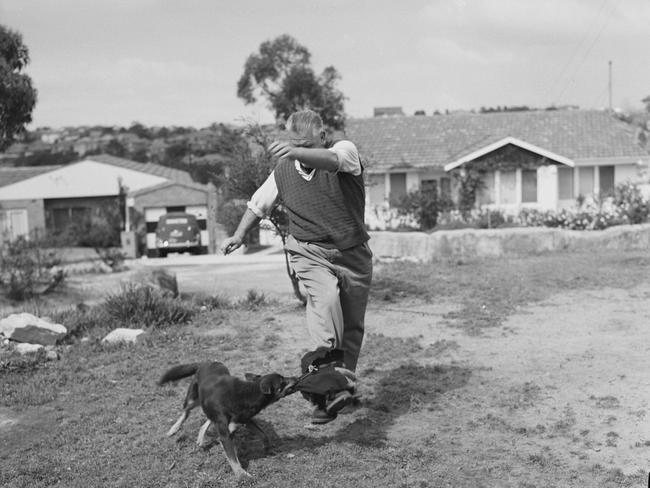
“They were capable of leading children and other persons gently by the hand, and would remain peacefully in one position without moving for hours on end. “Part of their training was also to jump hurdles, and nine feet walls, to climb ladders, and to walk along narrow planks.”
The Queensland police commissioner, William Ryan, tried to pour cold water on the NSW police for using dogs.
He said the NSW police force was 25 years behind the times in its decision to introduce dogs to the force.
Queensland, he said, had two police dogs at that time but they were not a success and had been dispensed with.
Perhaps it was the water north of the Tweed because one of the NSW dogs, Tess, proved her worth within days of going on the job.
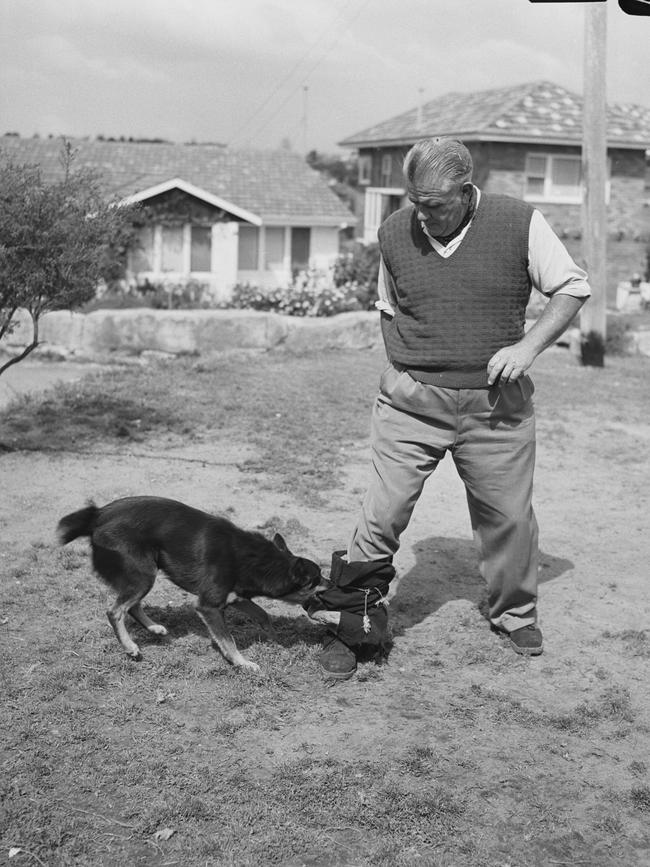
On August 22, the manager of the South Steyne Garage at Manly, Charles Harris, left the garage in the afternoon in his truck to go rabbit shooting around South Creek and the outskirts of Cromer golf course but had not returned at midnight.
His truck was found abandoned near South Creek and a quick search failed to reveal any trace of him.
Manly police called Constable Denholm at his Dulwich Hill home for the services of Tess.
The big search party included seven police officers and members of Harris’s family, but it was Tess that shone that night.
Reaching the spot where the truck had been found, Constable Denholm let Tess sniff a coat belonging to Harris that had been brought from the South Steyne Garage.
Tess immediately set off, followed by the rest of the party, over rough and at times precipitous ground.
After two hours battling through the bush, Tess led the searchers to the top of a 30m cliff.
Flashing their torches down the gully, the searchers saw the figure of a man lying at the foot of the cliff.

Constable Denholm climbed down the cliff and found Harris asleep beside a burnt-out fire.
After being rescued, Harris said that he became lost and tried to find his way down to the bottom of the cliff but was overtaken by the darkness and, finding a convenient rock shelf, made himself comfortable.
He had no matches so he poured powder from the cartridges he was carrying on to some leaves, then fired a shot into the pile and soon had a fire burning.
The following day, NSW police commissioner Walter Childs told the press that he had issued instructions to police officers throughout NSW that in future, when anyone was reported missing, every attempt would be made to send one of the police dogs to take part in the search.
Despite its successes, the police dog unit was disbanded in 1954 and wasn’t officially re-formed until 1979.
Since that time, the dog unit has expanded in size and capabilities to match the increasing demands of police work.


